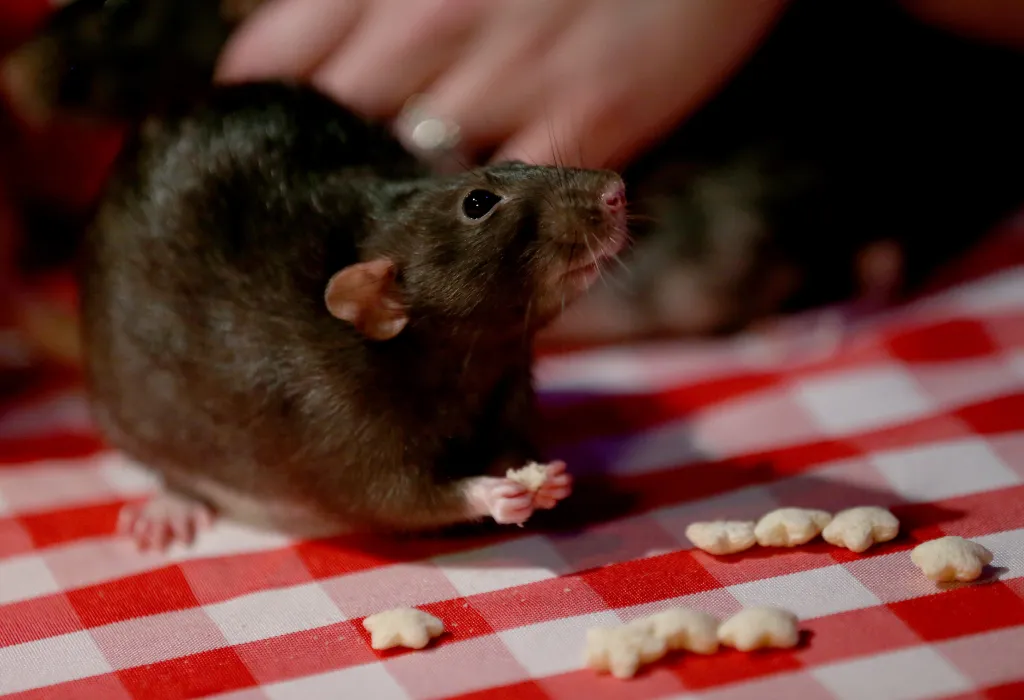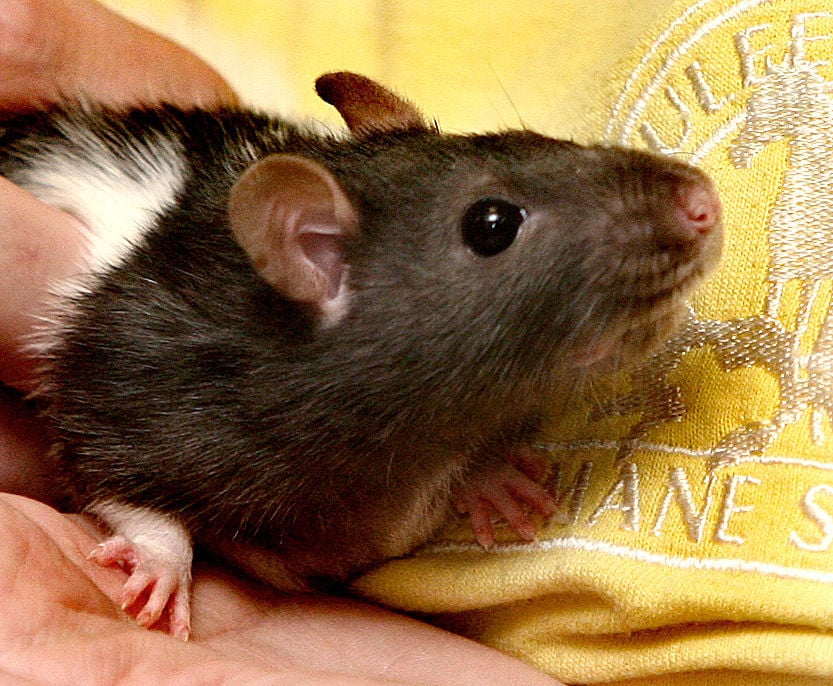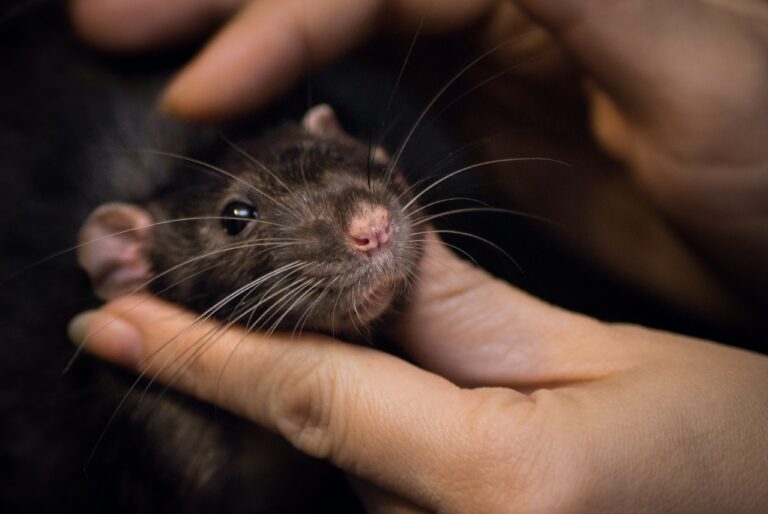Touching rat poison with bare hands can be a perilous and potentially life-threatening encounter. Rat poison often contains toxic chemicals like anticoagulants or other harmful substances.
Moreover, it is designed to exterminate rodents and poses significant risks to human health when not handled with extreme caution. However, to protect yourself, always use gloves and a mask when handling rat poison and follow the product’s safety instructions.
Here, you will be aware of the dangers and how to avoid them in order to protect yourself and the environment.
Understanding Rodenticides: Effective Pest Control and Safety

Rodenticides often called “rat poison,” are specially designed pesticides to manage rodent problems. They’re not limited to rats and mice but also tackle issues with squirrels, moles, voles, and gophers. These substances are essential for pest control when traditional trapping methods are ineffective.
Further, they come in various forms like baits, sprays, pellets, blocks, or powders, each intended to attract and eliminate specific rodent types. Also, work in different ways – some prevent blood from clotting (like anticoagulants), while others disrupt the nervous system of those who ingest them.
However, there’s a significant danger with rodenticides. Their attractiveness extends to unintended consumers. Household pets, like cats and dogs, can accidentally come into contact with sprays and powders. Even humans are at risk, especially when using easily dispersible forms. Birds, other animals, and people can suffer harm from consuming or being exposed to these potent substances.
It’s also essential to understand that rodenticides belong to one of the top three commonly used pesticide categories, which encompass:
- Insecticides: These formulations specialize in controlling troublesome insect populations, finding utility in agricultural settings and pharmaceuticals.
- Herbicides: Often recognized as weedkillers or fertilizers, they are instrumental in the management of plant life.
- Fungicides: Crafted for the containment of fungi and their spores, these pesticides play a vital role in protecting various crops and agricultural endeavors.
Types of rodenticides
| Type of Rodenticide | Description |
| Anticoagulant | – First-generation anticoagulants (e.g., warfarin, chlorophacinone, diphacinone) |
| – Second-generation anticoagulants (e.g., brodifacoum, bromadiolone, difethialone) | |
| – Multiple-feed baits that disrupt blood clotting, leading to internal bleeding. | |
| Non-Anticoagulant | – Acute toxicants (e.g., bromethalin, zinc phosphide) |
| – Single-feed baits that cause poisoning or paralysis upon ingestion. | |
| Cholecalciferol | – Contains high levels of vitamin D3 (cholecalciferol) that cause hypercalcemia and organ failure in rodents. |
| Aluminum Phosphide | – Produces phosphine gas when exposed to moisture, used as a fumigant. |
| Bromethalin | – A non-anticoagulant neurotoxic rodenticide affecting the central nervous system. |
| Sodium Channel Blockers | – Compounds like cholecalciferol, bromethalin, and others that disrupt sodium channels in nerve cells. |
| Zinc Phosphide | – Highly toxic compound, ingested by rodents, releases phosphine gas, causing toxic effects. |
| Natural and Biological | – Predatory animals, biological controls, and repellents used for natural and non-lethal rodent control. |
Can Rat Poison Be Absorbed Through the Skin?
Yes, rat poison can indeed be absorbed through the skin, which raises concerns about its impact on human health. It often contain toxic ingredients, and there are multiple ways through which they can harm humans:
Ingestion: Direct or indirect ingestion of it is the most common route of exposure. This can occur when humans consume food or water contaminated by the poison, or if a person intentionally or inadvertently ingests the poison.
Dermal Absorption: When rat poison is handled without appropriate protective gear, the toxic compounds can be absorbed through the skin, potentially leading to health issues. This underlines the importance of wearing gloves and taking precautions during contact.
Inhalation: during its use can also pose risks, especially when applying powders or aerosol forms. Proper respiratory protection, such as a mask, should be used to prevent inhalation.
Effects of Rodenticide Poisoning in Humans
- Bleeding: Visible bleeding from the gums, nose, or skin.
- Chills: Experiencing sudden cold shivers.
- Altered Mental State: Confusion and changes in mental clarity.
- Convulsions: Involuntary muscle spasms and movements due to disruptions in brain activity.
- Dehydration: Excessive thirst and increased urination.
- Headache: Severe headaches.
- Internal Bleeding: Indicated by lightheadedness, shortness of breath, pain, nausea, and vomiting.
- Lethargy: Overwhelming exhaustion.
- Pain: Discomfort and distress.
- Seizures: Sudden disturbances in brain activity, leading to changes in consciousness, involuntary movements, and other related symptoms.
- Shortness of Breath: Difficulty in breathing.
- Upset Stomach: Nausea and vomiting.
Potential Consequences
Besides poison can lead to profoundly grave complications, encompassing the likes of brain damage, liver impairment, kidney failure, coma, and, in the most severe cases, fatality.
Furthermore, the process of providing treatment can introduce its own set of complications, including occurrences such as vomiting, diarrhea, constipation, abdominal discomfort, and bloating.
Immediate Actions When Exposed to Rat Poison
If you, a family member, or someone you know has encountered rat poison through ingestion, skin contact, or inhalation, it is imperative not to attempt self-treatment using over-the-counter remedies or home-based solutions.
Contact Poison Control: Your first step should be to immediately contact Poison Control and rigorously adhere to their guidance. Timely communication is crucial as delays can amplify the risk of severe complications.
Follow Product Labels: Rat poison products invariably feature first aid instructions. Prior to opening the product, always review these instructions, just in case of exposure. For instance, the product label of CONTRAC All-Weather BLOX (containing bromadiolone, an anticoagulant) advises:
Ingestion: Contact Poison Control first and, if possible to swallow, sip water. Do not induce vomiting unless directed by a poison control expert or a medical professional.
Skin Contact: If it touches your skin or clothing, immediately remove the clothing and rinse the skin for 15 to 20 minutes. Notify Poison Control promptly for further guidance.
Eye Contact: In the event of it coming into contact with your eyes, flush your eyes with water while keeping them open for 15 to 20 minutes. Remove any contact lenses after five minutes and continue flushing.
Preventing Rat Infestations and Poisoning
The most effective approach to prevent unintentional rat poisoning is to eliminate the need for these products altogether. However, if their use becomes necessary, it’s crucial to exercise utmost care.
Rat Deterrence
To deter rodents from infiltrating your living space:
- Never leave food or wrappers strewn about your home, and securely dispose of leftover food in a tightly sealed outdoor trash can.
- Ensure that all cracks, crevices, and openings in your walls, windows, doors, garbage cans, and faucets are well-sealed to prevent rat ingress.
- Keep the vegetation surrounding your home, such as bushes and plants, well-trimmed to discourage rats from nesting.
Non-Toxic Repellents
Consider non-toxic rat and rodent repellents like:
- Fresh Cab Botanical Rodent Repellent: An EPA-registered natural repellent composed of balsam fir oil, fragrance oil, and plant fibers, suitable for indoor and outdoor use.
- Peppermint Oil: They detest this scent. Dampen cotton balls with peppermint oil and place them near nests or areas with droppings as a temporary solution.
- Vinegar: Mopping the floor with vinegar regularly can create a strong odor rat dislike.
- Diatomaceous Earth: This harmless powdery substance comprising fossilized diatoms, desiccates rodents’ insides when ingested.
Utilize Rat Traps
In case deterrence efforts prove insufficient, employ rat traps. Position traps in locations where children and pets cannot access them, often behind appliances or in strategic areas.
Remember that rats and mice tend to stay close to their nests, so you don’t need traps in every corner of your space. Placing them within 10 to 12 feet of the nest is usually adequate for effective control.
Prevention and non-lethal control measures should be the primary focus to maintain a rat-free environment and minimize the need for potentially harmful rat poisons.
Storage and Safe Handling

- Always store rodenticides in cool, dry locations that remain out of reach for both children and pets. It’s crucial to refrain from using it in areas like the kitchen.
- Whenever you handle it deal with deceased rodents, or address rat nests, it is essential to don appropriate protective gear, encompassing gloves, eyewear, and a mask.
- After completing any task related to rat poison, ensure a comprehensive handwashing routine with soap and water. Moreover, diligently clean any surfaces or handles you may have touched during the process.
Read Instructions: Prior to opening bait traps or pest control poison kits, carefully review the provided instructions.
Bait Trap Handling:
- Handle the removal of bait traps with care.
- Position bait stations in areas that are inaccessible to children and pets.
- Inspect at intervals of 4 to 8 hours.
- If a rat or mouse is caught in the trap, use gloves to remove and safely dispose of the trap.
- Meticulously clean the areas where you have situated it.
FAQs
Can Rat Poison Kill Humans?
Yes, rat poison can potentially be lethal to humans. In case of any exposure to rat poison, it should be treated as a serious matter. Immediate contact with 911 or poison control is crucial. While there’s no safe amount of rat poison to consume, healthy adults may survive small exposures.
How Much Rat Poison Is Dangerous to Humans?
The exact amount of rat poison that can be dangerous varies based on factors like body weight, age, and genetics. Small children or individuals with cardiovascular or liver issues can be seriously harmed by even small amounts. Rat traps typically contain about 50 milligrams of poison per trap.
Are All Rat Poisons Equally Dangerous?
Not all rat poisons are equally dangerous to humans. Bromethalin is considered less toxic because a significant amount is needed to be fatal. Thallium poisoning, although rare, can be fatal with as little as 8 mg. Cholecalciferol poisoning is more common in pets than in humans.
Does Milk Dilute Poison?
No, drinking small amounts of water or milk won’t reduce the toxins in your body if you’ve swallowed poison. It may temporarily soothe irritation, but it doesn’t mitigate the poison’s effects.
What Happens If I Get Rat Poison on My Skin?
Getting rat poison on your skin can lead to symptoms like bleeding from the nose, skin, or gums. Immediate action is necessary.
Can Mouse Poison Be Absorbed Through the Skin?
Yes, rodenticides can enter the body through direct contact with the skin or via inhalation.
What Do I Do If I Touch Rat Poison?
If you come into contact with rat poison, remove your clothes, wash your hands thoroughly with Dettol or a suitable cleansing agent for 15 to 20 minutes, and seek assistance from a veterinarian or animal help center.
Final Words
In summary, touching rat poison with bare hands can be highly risky for human health. Rat poisons contain harmful chemicals that can affect us through direct contact or inhalation. Some of these ingredients can interfere with blood clotting and have severe health consequences.
Furthermore, to stay safe, it’s crucial to handle it carefully, use protective gear, and follow proper storage and disposal guidelines. If there’s any accidental contact, seek immediate medical help or professional assistance. The dangers of handling it underscore the importance of opting for safer pest control methods and considering non-toxic alternatives.

